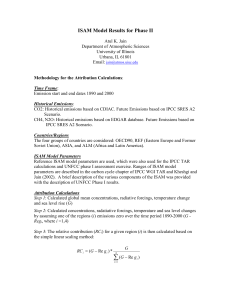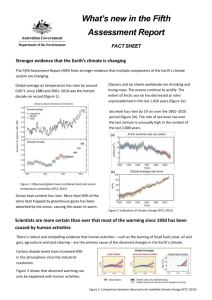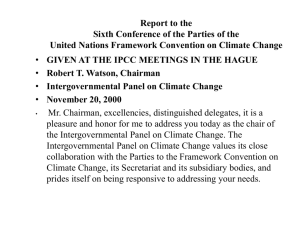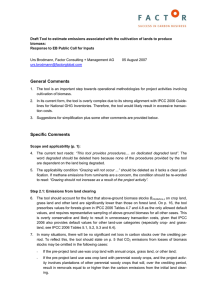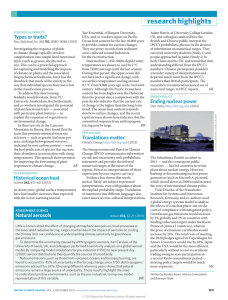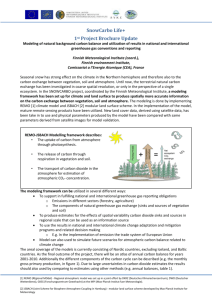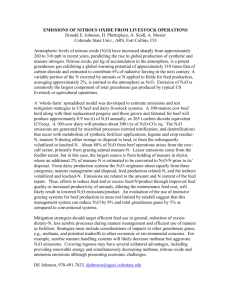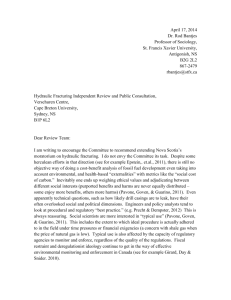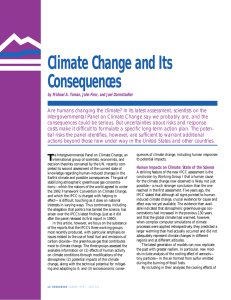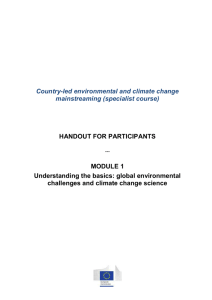N2O emissions soils
advertisement
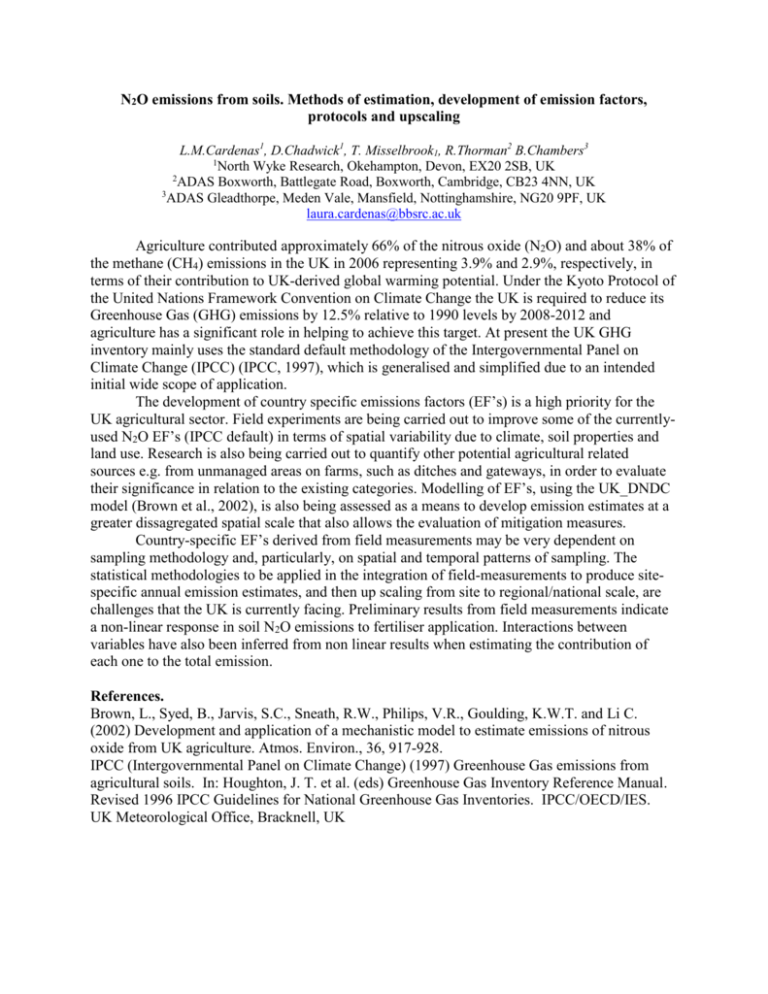
N2O emissions from soils. Methods of estimation, development of emission factors, protocols and upscaling L.M.Cardenas1, D.Chadwick1, T. Misselbrook1, R.Thorman2 B.Chambers3 1 North Wyke Research, Okehampton, Devon, EX20 2SB, UK 2 ADAS Boxworth, Battlegate Road, Boxworth, Cambridge, CB23 4NN, UK 3 ADAS Gleadthorpe, Meden Vale, Mansfield, Nottinghamshire, NG20 9PF, UK laura.cardenas@bbsrc.ac.uk Agriculture contributed approximately 66% of the nitrous oxide (N2O) and about 38% of the methane (CH4) emissions in the UK in 2006 representing 3.9% and 2.9%, respectively, in terms of their contribution to UK-derived global warming potential. Under the Kyoto Protocol of the United Nations Framework Convention on Climate Change the UK is required to reduce its Greenhouse Gas (GHG) emissions by 12.5% relative to 1990 levels by 2008-2012 and agriculture has a significant role in helping to achieve this target. At present the UK GHG inventory mainly uses the standard default methodology of the Intergovernmental Panel on Climate Change (IPCC) (IPCC, 1997), which is generalised and simplified due to an intended initial wide scope of application. The development of country specific emissions factors (EF’s) is a high priority for the UK agricultural sector. Field experiments are being carried out to improve some of the currentlyused N2O EF’s (IPCC default) in terms of spatial variability due to climate, soil properties and land use. Research is also being carried out to quantify other potential agricultural related sources e.g. from unmanaged areas on farms, such as ditches and gateways, in order to evaluate their significance in relation to the existing categories. Modelling of EF’s, using the UK_DNDC model (Brown et al., 2002), is also being assessed as a means to develop emission estimates at a greater dissagregated spatial scale that also allows the evaluation of mitigation measures. Country-specific EF’s derived from field measurements may be very dependent on sampling methodology and, particularly, on spatial and temporal patterns of sampling. The statistical methodologies to be applied in the integration of field-measurements to produce sitespecific annual emission estimates, and then up scaling from site to regional/national scale, are challenges that the UK is currently facing. Preliminary results from field measurements indicate a non-linear response in soil N2O emissions to fertiliser application. Interactions between variables have also been inferred from non linear results when estimating the contribution of each one to the total emission. References. Brown, L., Syed, B., Jarvis, S.C., Sneath, R.W., Philips, V.R., Goulding, K.W.T. and Li C. (2002) Development and application of a mechanistic model to estimate emissions of nitrous oxide from UK agriculture. Atmos. Environ., 36, 917-928. IPCC (Intergovernmental Panel on Climate Change) (1997) Greenhouse Gas emissions from agricultural soils. In: Houghton, J. T. et al. (eds) Greenhouse Gas Inventory Reference Manual. Revised 1996 IPCC Guidelines for National Greenhouse Gas Inventories. IPCC/OECD/IES. UK Meteorological Office, Bracknell, UK

